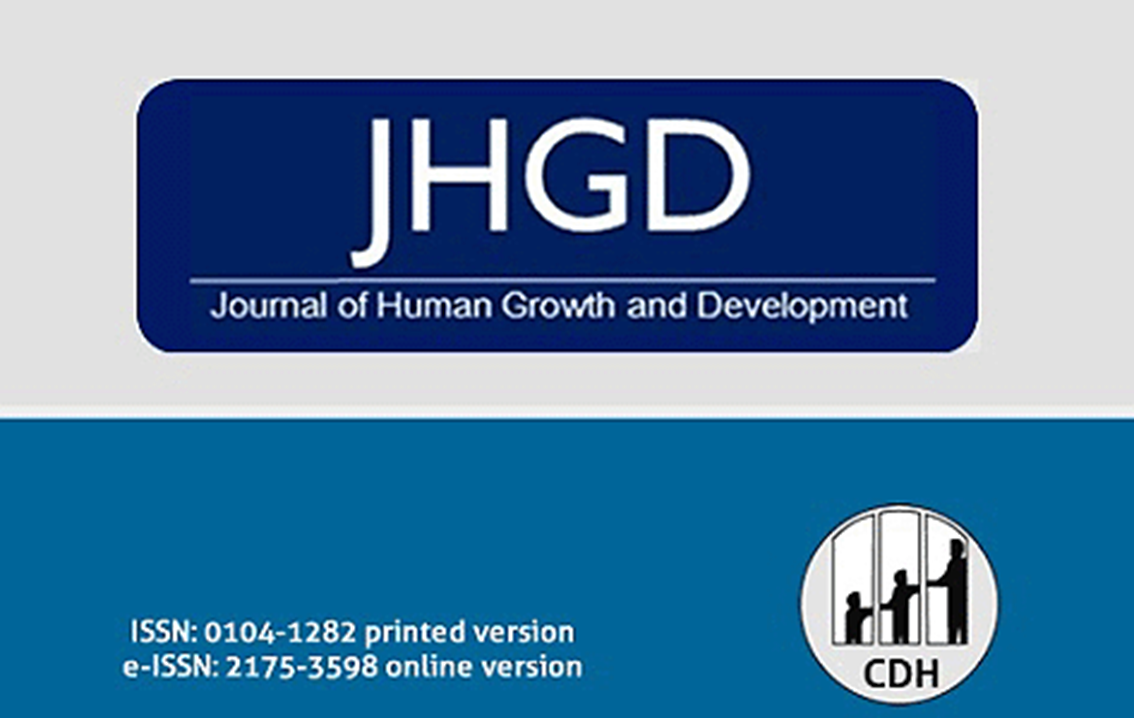Complete Androgen Insensitivity Syndrome and Literature Review
DOI:
https://doi.org/10.7322/jhgd.v29.9418Keywords:
androgen-insensitivity syndrome, dihydrotestosterone receptor deficiency, sex differentiation disorders, hernia, childAbstract
Backgroung: Complete Androgen Insensitivity Syndrome (CAIS) has been reported since 1923, but in 1953 it became known as “testicular feminization”. It is a rare recessive genetic disorder linked to the X chromosome that results in different mutations in the androgen receptor. The main clinical presentation in childhood is the presence of bilateral inguinal hernia in phenotypically female subjects. Incidence of androgen insensitivity syndrome in phenotypically females with inguinal hernia is estimated in 0.8% to 2.4%. This is a case report of complete androgen insensitivity syndrome and literature review of preoperative diagnostic methods. Case Summary: We present a 3 years and 6 months old child with female phenotype, born in São Paulo, Brazil which was diagnosed intraoperatively with complete androgen insensitivity syndrome, during inguinal hernia repair and present potential diagnostic alternatives that we consider viable options in order to avoid this kind of surprise during surgery. Conclusion: Investigation of CAIS should be standard in prepubertal girls with bilateral inguinal hernia, genetic techniques involving X chromatin or Y chromosome tests present the best choices.
Downloads
References
2. German J, Simpson J, Morillo-Cucci G, Passarge E, De Mayo A. Testicular Feminisation and Inguinal Hernia. Lancet. 1973; 2(7831):740-1. DOI: https://doi.org/10.1016/s0140-6736(73)92579-8
3. Sarpel U, Palmer SK, Dolgin SE. The incidence of complete androgen insensitivity in girls with inguinal hernias and assessment of screening by vaginal length measurement. J Pediatr Surg. 2005;40(1):133-6. DOI: https://doi.org/10.1016/j.jpedsurg.2004.09.012
4. Quigley CA, Bellis A, Marschke KB, el-Awady MK, Wilson EM, French FS. Androgen receptor defects: historical, clinical, and molecular perspectives. Endocr Rev. 1995;16(3):271-321. DOI: https://doi.org/10.1210/edrv-16-3-271
5. Patel V, Casey RK, Gomez-Lobo V. Timing of Gonadectomy in Patients with Complete Androgen Insensitivity Syndrome-Current Recommendations and Future Directions. J Pediatr Adolesc Gynecol. 2016;29(4):320-5. DOI: https://doi.org/10.1016/j.jpag.2015.03.011
6. Melo KFS, Mendonça BB, Billerbeck AEC, Costa EMF, Latronico AC, Arnhold IJP. Androgen insensitivity syndrome: clinical, hormonal and molecular analysis of 33 cases. Arq Bras Endocrinol Metab. 2005;49(1):87-97. DOI: http://dx.doi.org/10.1590/S0004-27302005000100012
7. Andrade FP, Cabrera PM, Caceres F, Gil B, Rodriguez-Barbero JM, Angulo JC. Umbilical Key Port bilateral laparoscopic orchiectomy in patient with complete androgen insensitivity syndrome. Int Braz J Urol. 2012;38(5):695-700. DOI: http://dx.doi.org/10.1590/S1677-55382012000500016
8. Oakes MB, Eyvazzadeh AD, Quint E, Smith YR. Complete androgen insensitivity syndrome--a review. J Pediatr Adolesc Gynecol. 2008;21(6):305-10. DOI: https://doi.org/10.1016/j.jpag.2007.09.006
9. Dohnert U, Wunsch L, Hiort O. Gonadectomy in Complete Androgen Insensitivity Syndrome: Why and When?. Sex Dev. 2017;11(4):171-4. DOI: https://doi.org/10.1159/000478082
10. Doehnert U, Bertelloni S, Werner R, Dati E, Hiort O. Characteristic features of reproductive hormone profiles in late adolescent and adult females with complete androgen insensitivity syndrome. Sex Dev. 2015;9(2):69-74. DOI: https://doi.org/10.1159/000371464
11. Wang S, Xu H, An W, Zhu D, Li D. Mutational analysis of the androgen receptor gene in two Chinese families with complete androgen insensitivity syndrome. Exp Ther Med. 2016;11(6):2277-83. DOI: https://doi.org/10.3892/etm.2016.3234
12. Brinkmann AO, Faber PW, van Rooij HC, Kuiper GG, Ris C, Klaassen P, et al. The human androgen receptor: domain structure, genomic organization and regulation of expression. J Steroid Biochem. 1989;34(1-6):307-10. DOI: https://doi.org/10.1016/0022-4731(89)90098-8
13. Wang C, Diao M, Li L, Liu S, Chen Z, Li X, et al. Laparoscopic dissection and division of distal fistula in boys with rectourethral fistula. J Surg Res. 2017;211:147-53. DOI: https://doi.org/10.1016/j.jss.2016.11.059
14. Burge DM, Sugarman IS. Exclusion of androgen insensitivity syndrome in girls with inguinal hernias: current surgical practice. Pediatr Surg Int. 2002;18(8):701-3. DOI: https://doi.org/10.1007/s00383-002-0801-8
15. Viner RM, Teoh Y, Williams DM, Patterson MN, Hughes IA. Androgen insensitivity syndrome: a survey of diagnostic procedures and management in the UK. Arch Dis Child. 1997;77(4):305-9. DOI: https://doi.org/10.1136/adc.77.4.305
16. Rahman SM, Hall NJ, Crolla JA, Robinson DO, Stanton MP, Burge DM. The use of mouth brushings for screening girls who present with inguinal hernia for complete androgen insensitivity syndrome. Eur J Pediatr Surg. 2012;22(2):136-8. DOI: https://doi.org/10.1055/s-0032-1308691






